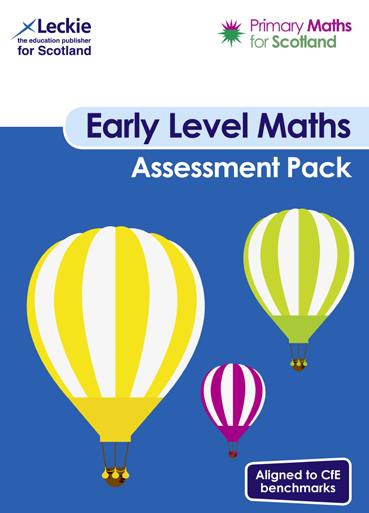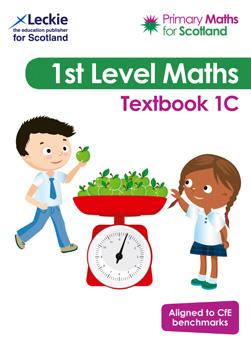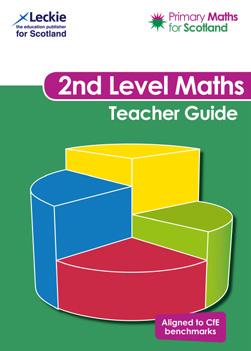There are three textbooks at First Level and three at Second Level. Engaging and pedagogically rigorous, the Textbooks help pupils master mathematics at their own pace. Clear and simple, they are easy to use and can fit in with teachers’ existing planning, resources and schemes of work.
Let’s practise sections provide opportunities to consolidate conceptual learning and develop procedural fluency
Two write-in practice workbooks per textbook provide plenty of practise questions to help embed and consolidate learning. With support and extension activities, the textbooks support the mastery approach to have all children working on the same topic at the same time.
Each unit is tightly focused on one objective, following small steps of progression
Characters introduce learning outcomes and lead pupils through the maths
Challenge questions give every child the chance to develop their problem solving and investigation skills
Gives teachers high-quality questions to set as and when they see fit
Helps children develop conceptual understanding alongside procedural fluency
A range of questions are provided in context to develop pupils’ understanding of real-life application of the skills they are learning
Teacher Guides
The Teacher Guides contain teaching ideas and activities that add breadth, depth and challenge to the textbook resource. They can be used to introduce a topic prior to pupils practising new skills or as part of reinforcement of learning.
Promotes
Signposts units to review if children do not possess pre-requisite knowledge and skills
Lists the pre-requisite knowledge required to
The Early Level Record Book is a pupil-facing write-in booklet that can be used to assess achievement of the Early Level benchmarks or as evidence of completion of Early Level.
The Assessment Packs contain questions to assess mental agility, procedural fluency and conceptual understanding of the key numeracy and mathematical ideas in each level. They are photocopiable resources that can be used both as a diagnostic tool to identify children requiring more support or challenge and to record and report children’s attainment. Supporting resources are available to download online.
5.
Before They Start sections ensure pupils have the prerequisite knowledge and skills they need before completing the problem
Let’s Discuss gives pupils different strategies to solve the problem independently, in pairs or groups. There are prompts for teachers as well as methods pupils may use
Let’s Go gives pupils working below age-related expectations an enabling prompt. There is an extension activity for those work above age-related expectations
Let’s Check gives solutions to the problem
Let’s Reflect offers an opportunity to discuss different strategies and methods as a class, to consolidate learning
Primary Maths for Scotland Early Level Record Book
Primary Maths for Scotland Early Level Teacher Guide
Primary Maths for Scotland Early Level digital pack (1 year subscription)
Primary Maths for Scotland Early Level Assessment Pack
Primary Maths for Scotland Textbook 1A
Primary Maths for Scotland Textbook 1B
Primary Maths for Scotland Textbook 1C
Primary Maths for Scotland 1A – Practice Workbook 1 (1st Aug)
Primary Maths for Scotland 1A – Practice Workbook 2 (10th Oct)
Primary Maths for Scotland 1B – Practice Workbook 1 (1st Aug)
Primary Maths for Scotland 1B – Practice Workbook 2 (10th Oct)
Primary Maths for Scotland 1C – Practice Workbook 1 (1st Aug)
Primary Maths for Scotland 1C – Practice Workbook 2 (10th Oct)
Primary Maths for Scotland First Level Teacher Guide
Primary Maths for Scotland Textbook 2A
Primary Maths for Scotland Textbook 2B
Primary Maths for Scotland Textbook 2C
Primary Maths for Scotland 2A – Practice Workbook 1 (1st Aug)
Primary Maths for Scotland 2A – Practice Workbook 2 (10th Oct)
Primary Maths for Scotland 2B – Practice Workbook 1 (1st Aug)
Primary Maths for Scotland 2B – Practice Workbook 2 (10th Oct)
Primary Maths for Scotland 2C – Practice Workbook 1 (1st Aug)
Primary Maths for Scotland 2C – Practice Workbook 2 (10th Oct)
Primary Maths for Scotland Second Level Teacher Guide
978-0-00-835970-6 £3.99
978-0-00-835969-0 £125.00 N/A
978-0-00-835968-3 £150.00
978-0-00-839246-8 £85.00 N/A
978-0-00-831395-1 £9.99
978-0-00-831396-8 £9.99
978-0-00-831397-5 £9.99
978-0-00-868027-5 £3.49
978-0-00-868028-2 £3.49
978-0-00-868029-9 £3.49
978-0-00-868030-5 £3.49
978-0-00-868031-2 £3.49
978-0-00-868032-9 £3.49
978-0-00-834894-6 £125.00 N/A
Primary Maths for Scotland First Level Assessment Pack 978-0-00-839247-5 £100.00 N/A
978-0-00-831398-2 £11.99
978-0-00-831399-9 £11.99
978-0-00-831400-2 £11.99
978-0-00-868033-6 £4.19
978-0-00-868034-3 £4.19
978-0-00-868035-0 £4.19
978-0-00-868036-7 £4.19
978-0-00-868037-4 £4.19
978-0-00-868038-1 £4.19
978-0-00-834895-3 £125.00 N/A
Primary Maths for Scotland Second Level Assessment Pack 978-0-00-839248-2 £100.00 N/A
Early Level Problem Solving Pack 978-0-00-850866-1 £75.00 N/A
First Level Problem Solving Pack
Second Level Problem Solving Pack
First Level Wipe-Clean Maths Templates for CfE Primary Maths
Second Level Wipe-Clean Maths Templates for CfE Primary Maths
Early Level Wiple-Clean Maths Templates for CfE Primary Maths
Collins Maths Dictionary
Christine Stein (West Scotland) 07825 116 401 • christine.stein@harpercollins.co.uk Title
Claire McAuley (East Scotland) 07557 188 154 • claire.mcauley@harpercollins.co.uk
978-0-00-850867-8 £90.00 N/A
978-0-00-850868-5 £90.00 N/A
978-0-00-832033-1 £4.99
978-0-00-832034-8 £4.99
978-0-00-836445-8 £4.99
978-0-00-821237-7 £9.99
Freepost RTKB-SGZT-ZYJL Honley

















































